Interested in learning how to get into Ketosis fast? We’ve created a step by step guide to optimize your ability to quickly and efficiently kickstart the Keto Diet.
Below you’ll find an exact Plan to Get in Ketosis Fast. Note: it is highly likely you’ll be in Ketosis much faster than 4 days… stick to the plan either way.

If you’ve read about the Keto Diet and are interested in getting into Ketosis quickly this post will help you understand exactly what to do. If you’re unsure about what the Keto Diet is read this first.
The first time attempting the Keto Diet I hated it. I was tired (I don’t often feel tired) and my stomach was (rolling / gurgling / angry) the whole time. I lasted one week for my first attempt and I felt miserable! Guess what, I did it wrong. Let’s avoid that…
Before you start / what to know.
Understanding Ketones
First: Understanding Sugar Burners & Glucose
Most people are sugar burners (you eat loads of carbs and they in turn create blood sugar and help to keep you going).
Your body’s cells are powered by an energy molecule called ATP (Adenosine triphosphate), this is made by using glucose (blood sugar).
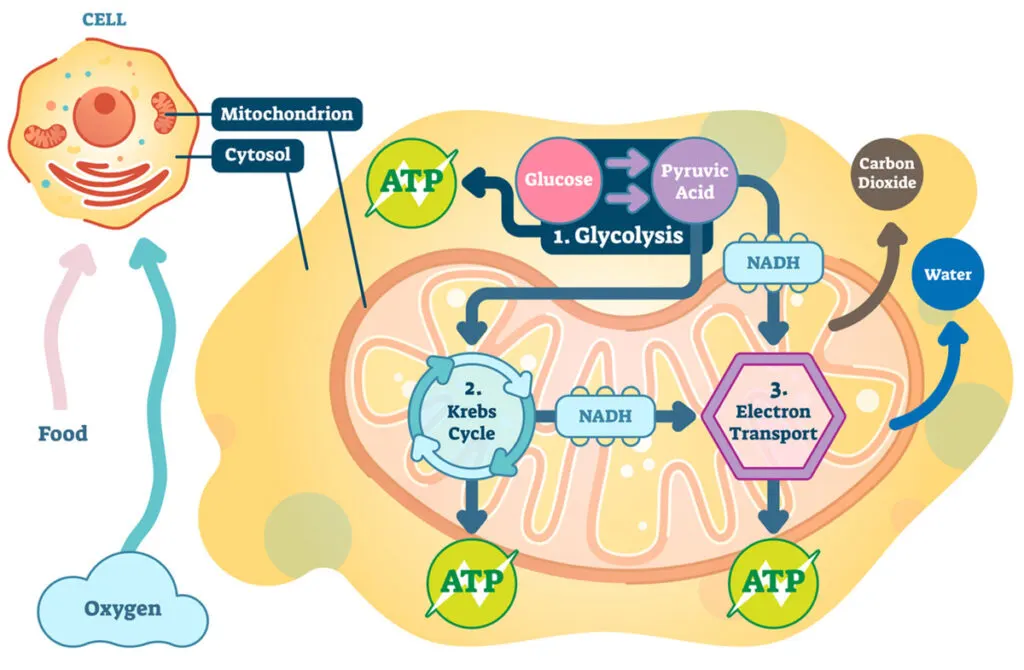
Understanding Ketone Production
When your body is in Ketosis, your liver creates molecules called ketone bodies. These Ketone bodies are typically produced when glucose is not available as a fuel source.
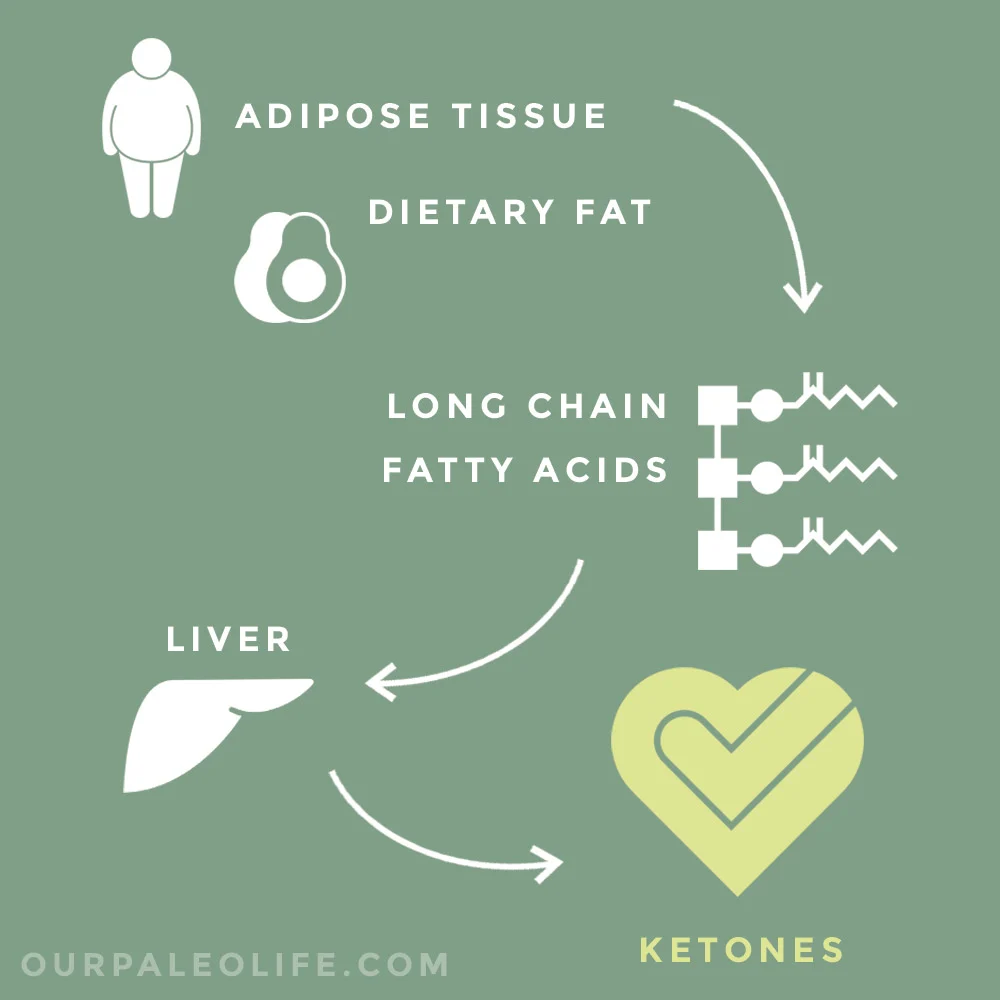
Getting into Ketosis means your body has to use more energy (utilize and burn fat). Unsure about the specifics on the Keto diet? Check out this post on Intro to Keto.
Remove Glycogen Stores (get in Ketosis Fast)
When you reduce your Glycogen stores, your body is forced to use your fat for energy (or dietary fat – what you eat). This reduction in glycogen stores may come from fasting or by your activity levels and what you consume (more on that in a little bit).
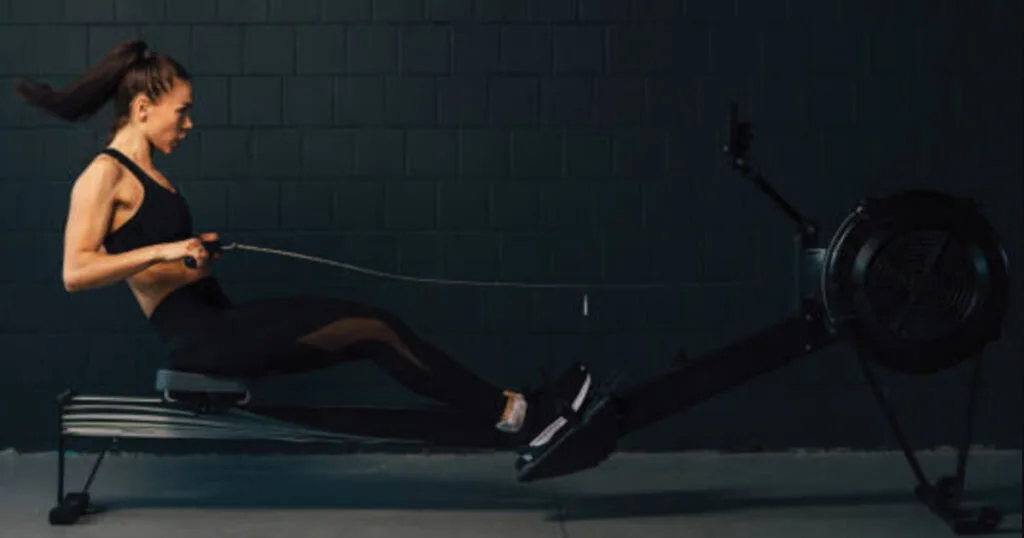
Keto Transition & Testing
You’re going to have to be “all in” – don’t try Keto unless you’re willing to give it all you’ve got. You’re going to need to deplete glycogen stores, and the faster you can do this the better you’re going to feel.
Your body is going to transition from being a sugar burner to being a fat burner. However, you might feel lethargic, have cramps, be irritable, and get headaches. You’re transitioning, did you think it would be easy to just switch up your body’s routine? Sorry but no, the vast majority will struggle at first. But it’s okay, this is transition is natural and things are going to get much better if you follow these steps!
How will I know I’m in Ketosis?
Pee strips are going to help at first. We’ve found that they have a shelf life. Don’t buy them if you’re not ready.
Note: the test strips are only good to see what you’re peeing out, that’s it. Testing blood ketone levels is MUCH more effective and more expensive too. It’s not necessary but it’s useful at the start. Long term, don’t bother.
After your initial entry in to ketosis and this new way of eating, tracking blood sugar is much more impactful. I’ve got 2 blog posts that will illustrate how important tracking blood sugar is:
Let’s talk about fasting…
Intermittent Fasting (Keto Kickstart)
Want to significantly kickstart Keto? Learn to love fasting. IF (or Intermittent Fasting) is the avoidance of calorie consumption over an extended period of time. Typically this time allows an 8-12 hour window each day for calorie consumption. Some people practice OMAD (one meal a day) – which provides them with an eating window of 1-2 hours. Everyone is different, don’t stress over this – select a plan that’s reasonable and stick to it. More in a bit…
Intermittent fasting is a powerful tool in relation to ketosis and will really allow you to learn how to kickstart Ketosis.
In 2016, the Noble Prize in Physiology / Medicine was given to Yoshinori Ohsumi for discovering some of the mechanisms of autophagy – the orderly degradation and recycling of cellular components.
When the cells undergo the process of autophagy:
- Damaged proteins: removed / recycled
- Invading microorganisms: removed
- Toxic compounds: removed.
Broken down in understandable terms, this means: you’re slowing the aging process, reversing disease, and helping to prevent cancer. The problem for most is that it doesn’t happen all the time because you’re always eating. The constant intake of food is thwarting the process. That’s right, I used the word thwarting.
Fasting, protein restriction, and carbohydrate restriction are the three main ways to initiate the autophagic processes via diet. This is one reason highlighting why the ketogenic might be the right therapeutic change your body needs.
Finally…
How to Get in Ketosis Fast
The following section is going to layout point by point what we’ve tested and found very successful. This particular guide is not a meal plan. It’s an outline for what works to get into lasting Ketosis (and do it quickly).
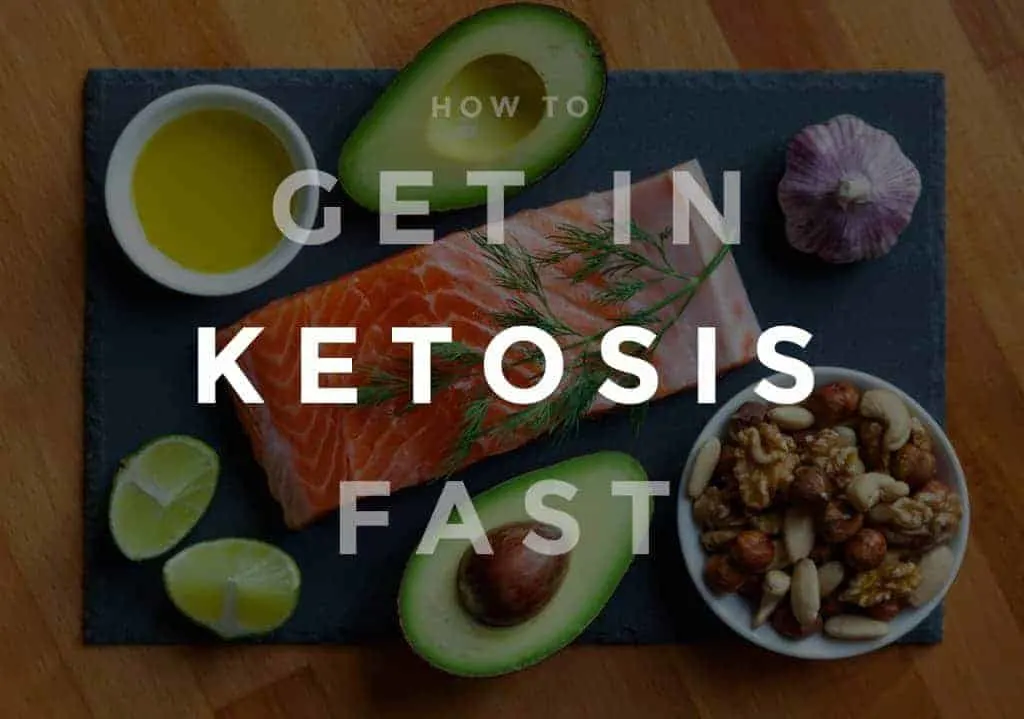
The Right Keto Plan
Tip (before you even get started) – DRINK WATER. You’re going to be fasting but that doesn’t mean you’re not going to drink water. You’re going to drink a lot of water. Keto is a natural diuretic – this means you’re going to pee a lot and lose water weight.
Try this Ketovore Meal Plan >>> it’ll really help you on your path to getting into Ketosis.
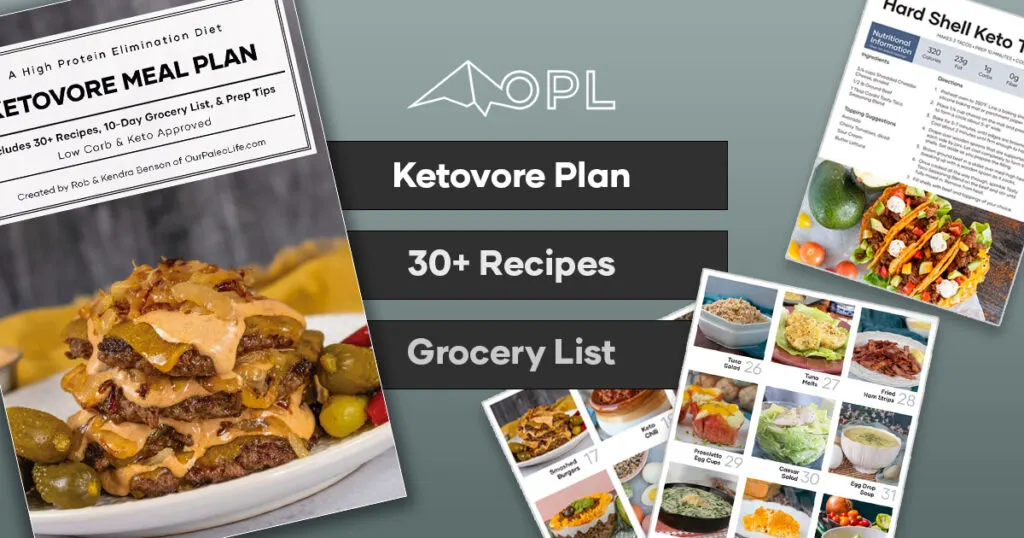
Water & Electrolytes (very important when “going Keto”)
During the hours you’re fasting you’re also going to need to increase your electrolyte intake (sodium, magnesium, potassium). Best Option: cardnl’s Salty Lemon Twist electrolytes. Read about how to pick the right electrolyte blend.
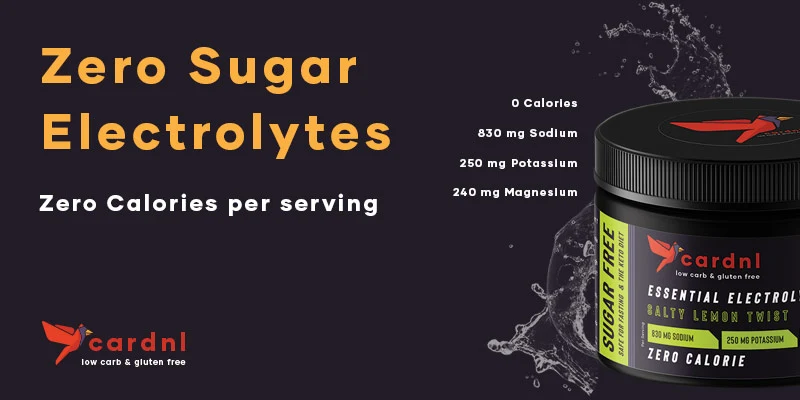
When you drastically reduce your carb intake your insulin-levels decrease and your kidneys release more salt than when you were eating a bunch of carbs. You’re reducing your insulin levels while getting into Ketosis (when you eat carbs your insulin levels rise); salt is not getting properly released by the body and you’re not optimally healthy. Thanks a lot, carbs!
During this initial phase when getting into Ketosis you’ve got to up the: Water, Calcium, Magnesium, Sodium, & Potassium intake. Naturally, your salt cycle will restore and your body is going to properly thank you. You feel so much better!
Balancing electrolytes is the biggest supplement game changer I’ve experienced.
Consume Exogenous Ketones at the Start
This section was originally written here (in this post) – How to boost energy on Keto.
WHEN I REFER TO KETONES BELOW – KNOW THIS:
Exogenous means: you consume it. Endogenous means: it’s naturally created in your body.
When you limit carbs, or fast, your body will produce energy via ketones. If you’re starting the keto diet, it’s a great time to introduce exogenous ketones. This process is kinda like you making the introduction to your body: “oh hey, these are my friends, Ketones. I think you guys will really get along.”
You can also supplement with ketones when you’re in need of more energy. Combining ketone consumption and carbs may provide a frenzied energy boost for game or race day. If your body is used to endogenously providing energy for all your daily needs, a boost on the day you really need it, might make you feel amazing! Who doesn’t want that?
I do not recommend regular ketone consumption. Let your body handle it, it’s natural. I do recommend ketone consumption at the start of your keto diet experience and when you want to really capitalize on energy.
ON TO THE RECOMMENDATION
Please let me know how this plan works for you in the comments. Please ask questions in the comments too.
How to Get Into Ketosis
Here is your daily plan on how to properly get into Ketosis and kickstart your journey on the Keto Diet. If you’re looking for foods that get you into ketosis fast, check out our Keto Foods List and put a major focus on animal products in addition to high quality fats.
How to Achieve Ketosis: Day 0 – Sunday Night
- Eat a Keto Dinner that’s low in carbs (no later than 6pm).
- Drink Water & Electrolytes
- Pee on a test strip (if you’re just getting started, you’re not going to change the color on that little strip). BUT it’s good to see before you get started.
Day 1 – Monday
You’re not going to eat food until 3pm. This is going to give your body the chance to rid itself of as much of its Glycogen stores as possible. Not eating until 3pm is part of this purging process (only part of the process though). It’s going to be tough, the sense of accomplishment alone will be worth it.
You’re also going to need to get in (3) 10 minute sessions of moderate / difficult cardio. You’re going to spread these 10 minute sessions out (from when you wake up – till 3pm). We have an Airdyne and a C2 Rower. We’ll take 5 minutes on the Airdyne followed by another 5 minutes on the C2 – I’m breathing pretty heavy after this exercise. The idea behind this is to encourage your body’s Glycogen stores to be utilized quickly (so we don’t have a long transition phase). If you don’t have a C2 or Airdyne, jog. It’s just 10 minutes, you’ve got this!
Let’s say you wake up at 7am:
- Drink Water (with a pinch of added, non-processed real salt – no iodine) – Drink as much as you can. Keep it on-hand and readily available – this applies throughout the day.
- 7:30 (10 Minutes of moderate / difficult cardio)
- 10:00 (10 Minutes of moderate / difficult cardio)
- 12:00 (Drink a serving of electrolytes & ketones – see above)
- 12:15 (10 Minutes of moderate / difficult cardio)
- 2:59 Pee on a test strip (if you’ve cycled through Ketosis before, you might be in. If not, don’t worry it’s still early).
- 3:00 Eat a meal rich with dark leafy greens, fatty meat, avocados and healthy oils. Pro tip: add in a serving of MCT oil to whatever you’re eating.
- You may eat Keto foods from 3pm – 8pm – Track your macros and feel full (don’t over do it). We’re not counting calories and you’re not going to over-indulge.
- 8pm – It’s water for you! Happy peeing.
- Before you go to bed (1 serving of electrolytes) – that’s your second serving for the day.
- Pee on a test strip
Keto Supplements (How to Enter Ketosis)
You were just introduced to three supplements. Here’s what they are:
- MCT Oil – Packed with nutritious fats, MCTS are absorbed directly from the gut to the liver, where they are burned quickly for energy.
- Ketones – Any reputable ketone supplement will do.
- Electrolytes – Calcium, Magnesium, Sodium, & Potassium – learn more about the INCREDIBLE VALUE here.
Day 2 – Tuesday
At this point (or yesterday afternoon after you ate) you may be feeling a bit of churning stomach, that’s okay. If you’ve got a headache at any point, did you consume your electrolytes?
Again, we’ll assume you woke up at 7am.
- Pee on a test strip
- Drink Water
- 12:00 (Drink a serving of electrolytes & ketones)
- 12:15 (10 Minutes of moderate / difficult cardio)
- 12:59 Pee on a test strip
- 1:00 Lunch Time! Eat a meal rich with dark leafy greens and a fatty meat. Check out our Keto recipes for ideas on what to eat. Add in a serving of MCT oil to whatever you’re eating.
- You may eat Keto foods from 1pm – 8pm – Track your macros and feel full (don’t over do it, we’re not counting calories right now). Counting calories is a great idea to help with accountability but let’s not over-burden this process right now. We’re trying to keep things simple.
- 8pm – It’s water for you! Happy peeing.
- Before you go to bed (1 serving of electrolytes)
- Pee on a test strip
Day 3 – Wednesday
Wednesday will be the same process as Tuesday, and you very might well already be in Ketosis! But in case you are not, here is the protocol to follow:
Again, we’ll assume you woke up at 7am.
- Pee on a test strip
- Drink Water
- 12:00 (Drink a serving of electrolytes & ketones)
- 12:15 (10 Minutes of moderate / difficult cardio)
- 12:59 Pee on a test strip
- 1:00 Lunch Time! Eat a meal rich with dark leafy greens and a fatty meat. Check out our Keto recipes for ideas on what to eat. Add in a serving of MCT oil to whatever you’re eating.
- You may eat Keto foods from 1pm – 8pm – Track your macros and feel full (don’t over do it).
- 8pm – It’s water for you! Happy peeing.
- Before you go to bed (1 serving of electrolytes)
- Pee on a test strip
Day 4 – Thursday
Your body should already be in ketosis, but in case it’s not, you will be following the same ritual as you did on Day 2:
Again, we’ll assume you woke up at 7am.
- Pee on a test strip
- Drink Water
- 12:00 (Drink a serving of electrolytes & ketones)
- 12:15 (10 Minutes of moderate / difficult cardio)
- 12:59 Pee on a test strip
- 1:00 Lunch Time! Eat a meal rich with dark leafy greens and a fatty meat. Check out our Keto recipes for ideas on what to eat. Add in a serving of MCT oil to whatever you’re eating.
- You may eat Keto foods from 1pm – 8pm – Track your macros and feel full (don’t over do it).
- 8pm – It’s water for you! Happy peeing.
- Before you go to bed (1 serving of electrolytes)
- Pee on a test strip
Day 5+ of Getting into Ketosis Fast
Congratulations! You should be in ketosis, and can now follow a normal keto meal plan.
At his point you may want to start counting calories and macros. There are great calculators online to help you with this.
For more information and tips, here are a few helpful posts:
- Intro to Keto
- Net Carbs Explained
- Glycemic Index for Sweeteners
- Continuous Glucose Monitor (Keto Products Tested)
- What is Allulose?
- What is Erythritol?
- What is Stevia?
Frequently Asked Questions >>> Getting into Ketosis
Let’s review some questions I often get about getting into Ketosis (a review + more information)
What are some foods that get you into ketosis fast?
Some foods that can help you get into ketosis quickly include avocado, cheese, eggs, fish, meat, and oils, such as coconut oil, olive oil, and avocado oil. These foods are high in healthy fats and protein, which can help your body enter ketosis. It’s important to remember that everyone is different, and the rate at which you can enter ketosis can vary based on your individual metabolism and other factors. It’s always a good idea to talk to your doctor before making any changes to your diet.
How do you reach ketosis?
To reach ketosis, you need to follow a diet that is low in carbohydrates and high in healthy fats and protein. This type of diet, often called a ketogenic diet, causes your body to start burning fat for energy instead of carbohydrates. When your body is in ketosis, it produces ketones, which are molecules that your cells can use for energy. To reach ketosis, you need to restrict your carb intake to about 5-10% of your daily calories and increase your intake of healthy fats and protein. This can be achieved by eating a diet that includes plenty of fatty fish, meat, eggs, nuts, seeds, and oils, such as coconut oil, olive oil, and avocado oil. It’s important to remember that everyone is different, and the rate at which you can reach ketosis can vary based on your individual metabolism.
Explain fasting to get into ketosis?
Fasting is a way to restrict your calorie intake by not eating for a specific period of time. When you fast, your body is forced to use stored glycogen (a type of carbohydrate) for energy. After the glycogen is used up, your body will start burning fat for energy, which can help you enter ketosis.
What is keto kickstart?
Keto kickstart is a term that is used to describe the process of starting a ketogenic diet. A ketogenic diet is a type of diet that is low in carbohydrates and high in healthy fats and protein. This type of diet causes your body to enter a state of ketosis, in which it burns fat for energy instead of carbohydrates. The keto kickstart phase is the initial phase of the diet, during which you gradually reduce your intake of carbs and increase your intake of healthy fats and protein. This can help your body adjust to the changes in your diet and can make it easier for you to enter ketosis.
How do you speed up ketosis?
To speed up ketosis, you can try the following tips:
- Reduce your carb intake: To enter ketosis quickly, you need to reduce your intake of carbohydrates. This can be achieved by cutting out starchy foods, such as bread, pasta, and rice, and replacing them with non-starchy vegetables, such as leafy greens, broccoli, and cauliflower.
- Increase your fat intake: To support your body during ketosis, you need to increase your intake of healthy fats. This can be achieved by eating fatty fish, such as salmon and mackerel, and adding oils, such as coconut oil and olive oil, to your meals.
- Exercise regularly: Exercise can help your body burn fat for energy, which can support ketosis. Try to incorporate a mix of aerobic exercise, such as running or cycling, and strength training, such as weightlifting, into your routine.
- Drink plenty of water: Staying hydrated is important for supporting your body during ketosis. Make sure to drink plenty of water and get enough electrolytes, such as sodium and potassium, to help your body function properly.
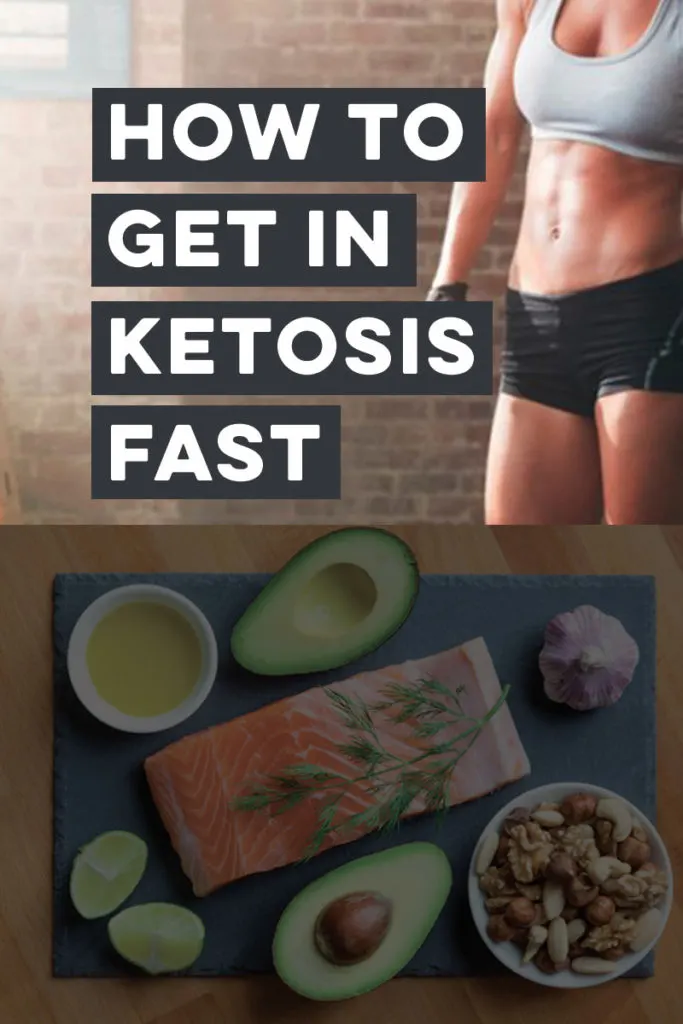
Thanks for visiting and reading!

Candace
Wednesday 25th of October 2023
What are your thoughts and/or preferences on keto gummies?
Rob Benson
Friday 27th of October 2023
A lot of them are tasty but be careful - the tummy pain can be terrible if you eat too many.
Christina
Thursday 8th of September 2022
Last week I started this plan and followed everything, Monday at 12:00 I drank my 1st glass of electrolytes and then I vomited violently for the next 6 hours with a massive headache, the pee strips showed between over 8 mmo/L between wine and dark wine color, the last 2 shades on the bottle. The electrolyte the pharmacist recommended was Vega sport hydrator as it was the only one they had . I would like to try again but not if I am going to be sick like that again, any suggestions would be appreciated .
Rob Benson
Friday 9th of September 2022
Oh no! Do you or your doctor have any guesses as to why you vomited? Your excess Ketones in your urine were VERY high too! I would find a health professional that understands Keto, have them guide you through the process again (if you really believe you need to be in Ketosis). Some people don't do well on a Ketogenic Diet. Use extreme caution. What works well for one may not work well for another. From what you've written, I would take a very slow approach next time that would include: calorie restriction, low-carb, high protein, moderate fat. Don't aim for Ketosis, aim first to reduce appetite and sugar. See how you feel and take the next steps. Hope this helps.
Nadia
Tuesday 22nd of March 2022
Hello everyone, I would like to see if someone can help me with my schedule. I wanted to know how this would look for me. Thanks in advance! Here's my daily break down.
Monday- Saturday: Bootcamp at wake up 3:45 4:30a.m or wake up at 4:45 5:30a.m Gym at 8am 45mins-1 hour. I come home and get my kids ready for school/daycare. Out the door no later than 7:00am on a bad day 7:15am. Then I head to the gym between 8-8:15am shower and off to work by 10am. Now I work 12 hour days I usually don't get hungry until around 3p.m I may push it until 4p.m then I usually don't eat anything else until the next day. I only work 3 days during the week which changes, but my start time is the same. So my morning routine is pretty much set during the full week.
Nadia
Saturday 2nd of April 2022
@Rob Benson, Thank you! It definitely hasn't been easy on some days. Appreciate the response.
Rob Benson
Wednesday 23rd of March 2022
You're a machine! That's a really great plan.
Stephanie
Tuesday 11th of January 2022
Is it ok to drink my electrolytes sooner then noon? Say 10am instead. Or does that matter?
Rob Benson
Tuesday 11th of January 2022
Consistency is more important than timing. If your electrolytes are balanced on the regular, you'll be doing great.
Monique
Wednesday 10th of November 2021
What are the chances coffee is okay during the fasting times?
Rob Benson
Thursday 11th of November 2021
For a lot of people coffee is perfect during fasting... just don't add calories (like cream). :)